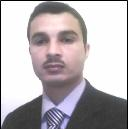International Journal of Computer Network and Information Security (IJCNIS)
IJCNIS Vol. 6, No. 10, 8 Sep. 2014
Cover page and Table of Contents: PDF (size: 553KB)
Distributed Monitoring for Wireless Sensor Networks: a Multi-Agent Approach
Full Text (PDF, 553KB), PP.13-23
Views: 0 Downloads: 0
Author(s)
Index Terms
Wireless sensor networks, multi-agent systems, monitoring, topology
Abstract
In this paper, we will present a state of the art in using multi-agent technology for wireless sensor networks where the main goal is the conception of software architecture and the network organization dedicated to optimization, performance analysis, and monitoring. Then we explore in particular, the issues of topology control and works in this field and the use of multi-agent systems. Finally we will propose an agent based algorithm for fault tolerance and topology control in a wireless sensor network. Our proposal consists to embed an agent at each node that is responsible for selecting its parent node or the next hop to the sink when transferring packets. The process of parent change is based on the computation of a fault tolerance degree which is calculated periodically by the agent in cooperation with neighboring nodes, in addition to other parameters such as the number of hops, the energy and the quality of link. Simulation results show that this method of changing parent allows a fault tolerant network with enhanced life time compared with the collect tree protocol CTP used for data gathering in a wireless sensor network.
Cite This Paper
Bechar Rachid, Haffaf Hafid, "Distributed Monitoring for Wireless Sensor Networks: a Multi-Agent Approach", International Journal of Computer Network and Information Security(IJCNIS), vol.6, no.10, pp.13-23, 2014. DOI:10.5815/ijcnis.2014.10.02
Reference
[1]S.Hussain, E.Shakshuki, and A.W.Morning, "Agent-based system architecture for wireless sensor networks", In Proceedings of 20th International Conference on Advanced Information Networking and Applications, Vienna University of Technology, Vienna, Austria, 18-20 April 2006.
[2]J.P.Jamont, and O.Michel, "Design of embedded multi agent systems: discussion about some specificities", VII Agent-Oriented Software Engineering Technical Forum, Paris, French, December 15, 2010.
[3]M.Samir," Further Structural Intelligence for Sensors Cluster Technology in Manufacturing", Journal of Sensors, Vol.6, 2006, pp.557-577.
[4]K.B. Pratik, Q.Hairong, and Y. Xu, "Collaborative Mobile-agent-based sensor fusion", Information Fusion, Vol.9, 2008, pp.399-411.
[5]J.P.Jamont, "MWAC: Multi-Wireless-Agent Communication", Revue Technique et science informatiques RSTI série TSI, Vol. 25, N°5, 2006, pp. 661-688.
[6]K.Smarsly, K.H.Law, and M.K?nig, "Resource-Efficient Wireless Monitoring based on Mobile Agent Migration", In proceedings of the SPIE: Health Monitoring of Structural and Biological Systems 2011. San Diego, CA, USA, 06 March 2011.
[7]R.H.B. Rahal, and B.Bounabat, "Wireless Sensor Network Simulation Of The Energy Consumption By A Multi Agent System", Journal of Theorical and Applied Information Technology, Vol. 25, N 1, 2011.
[8]W.Xue, B.Dao, D.Liang, and W.Sheng, "Collaborative Target Classification and Localization in Wireless Sensor Networks Agent". Journal of Sensors, Vol.7, N 8, 2007, pp.1359-1386.
[9]Y.Lingyun, W.Xingchao, G.Jianhou, and Z.Yanfang, "Data Gathering Algorithm Based on Mobile Agent and Emergent Event Driven in Cluster-Based WSN", Journal of Networks, Vol.5, N 10, 2010, pp.1160-1168.
[10]N.Jabeur, and P. A.Graniero, "Agent-Based Clusters to Virtually Manage Spatially Distributed Sensors", Projects TDMDSD08 and SII-73 University of Windsor, Department of Earth and Environmental Sciences, Windsor, Ontario, Canada, 2008.
[11]L.Min, X.Shijun, and S.Siyi, "An agent-based routing algorithm assistedQoS-forwireless sensor networks", Journal of Network and Computer Applications, Vol.35, N 1, 2012, pp.29-36.
[12]B.Dario, S.Marco, B.Andrea, C.Davide, and G.Marco, "Markovian agent modeling swarm intelligence algorithms in wireless sensor networks". Journal of Performance Evaluation, Vol.69, N 3-4, 2012, pp.135-149.
[13]D.C.Matthew, A.Djamel, P.H.Barry, and H.Alan, "A Bayesian network approach to a biologically inspired motion strategy for mobile wireless sensor networks", Journal of Ad Hoc Networks, Vol.7, N 6, 2009, pp.1217-1228.
[14]V.Saamaja, K.R.Kiran, and R.M.C.Siva, "Using mobile data collectors to Improve network lifetime of wireless sensor networks with reliability constraints", Journal of Parallel and Distributed Computing, Vol.70, N 7, 2010, pp.767-778.
[15]G.Wenzhong, X.Naixue, C.Han-Chieh, H.Sajid, and C.Guolong, "Design and Analysis of Self-Adapted Task Scheduling Strategies in Wireless Sensor Networks". Journal of Sensors, Vol.11, 2011, pp.6533-6554. doi: 10.3390/s110706533.
[16]X.Wang, B.Dao-wei, D.Liang, and W.Sheng, "Multi-agent Negotiation Mechanisms for Statistical Target Classification in Wireless Multimedia Sensor Networks", Journal of Sensors, Vol.7, N 10, 2007, pp.2201-2237; doi: 10.3390/s7102201.
[17]H.Hai-ping, W.Ru-chuan, S.Li-juan, W.Hai-yuan, and X.Fu, "Research on tasks schedule and data transmission of video sensor networks based on intelligent agents and intelligent algorithms", The Journal of China Universities of Posts and Telecommunications, Vol. 16, N 6, 2009, pp.84-91.
[18]F.Giancarlo, G.Stefano, G.Raffaele, and G.Antonio, "Agent-based Development of Wireless Sensor Network Applications", In Proceedings of the 12th Workshop on Objects and Agent, (741), Rende (CS), Italy, Jul 4-6, 2011,pp. 123-132.
[19]B.Rijubrata, "Mobile Agent based Architecture for. Wireless Sensor Networks", In proceedings of TKK T-110.5190 Seminar on Internetworking, Helsinki University of Technology, Finland, April 27, 2009.
[20]K.B.Ratik, S.Mendel, and P.Shashi, "An agent-oriented information processing architecture for sensor network applications", International Journal of Ad Hoc and Ubiquitous Computing, Vol.1, N 3, 2006, pp.110-125.
[21]A. M. Popescu, I. G. Tudorache, B. Peng and A.H. Kemp, “Surveying Position Based Routing Protocols for Wireless Sensor and Ad-hoc Networks”, International Journal of Computer Network and Information Security (IJCNIS), Vol.4, N 1, April 2012, pp.41-67.
[22]A.A.Azrina, Y.A.Sekercioglu, P.Fitzpatrick, and M.Ivanovich, "A survey on distributed topology control techniques for extending the lifetime of battery powered wireless sensor networks", Communications Surveys and Tutorials, IEEE, Vol.15, N 1, 2013, pp.121-144, on line: http://dx.doi.org/10.1109/SURV.2012.031612.00124.
[23]V.Rodoplu, and T.H.Meng, "Minimum energy mobile wireless networks", IEEE J. Salt. Areas Communications, Vol.17, N 8, 1999, pp.1333-1344.
[24]L.Li, and J.Y.Halpern, "Minimum-energy mobile wireless networks revisited". In proceedings of IEEE International Conference on Communications, Helsinki, Finlan, 11-14 Jun 2001, pp. 278-283.
[25]S.Narayanaswamy, V.Kawadia, R.S.Sreenivas, and P.R.Kumar, "Power control in ad-hoc networks: Theory, architecture, algorithm and implementation of the protocol compow", In proceedings of European Wireless Conference (2002), pp.156-162.
[26]X.Ya, J.Heidemann, and D.Estrin, "Geography-informed energy conservation for ad hoc routing", In proceedings of 7th Annual international conference on mobile computing and networking-MOBICOM, New York, USA, 2001, pp.70-84.
[27]C.Schurgers, V.Tsiatsis, and M.B.Srivastava, "STEM-topology management for energy efficient sensor networks", In proceedings of 2002 IEEE Aerospace Conference Proceedings, Vol.3, pp.3-1099-3-1108, On line: http://dx.doi.org/10.1109/AERO.2002.1035239.
[28]A.Cerpa, and D.Estrin, "Ascent: Adaptive Self-Configuring sensor networks topologies", IEEE Transactions on Mobile Computing, Vol.3, N 3, 2004, pp.272-285.
[29]D.Z.Du, and P.Pardalos, "Handbook of Combinatorial Optimization", Kluwer Academic Publishers, 2004.
[30]M.Burkhart, R.Wattenhofer, and A.Zollinger, "Does topology control REDUCE interference? ", In proceedings of. 5th ACM International Symposium on Mobile Ad Hoc Networking and Computing, New York, NY, USA, ACM 2004,pp.9-19.
[31]Z.Yuanyuan, X.Jia, and H.Yanxiang, "Energy efficient distributed connected dominating sets in wireless sensor networks building", In proceedings of the 2006 International conference on wireless communications and mobile computing, New York, NY, USA, ACM 2006, pp.797-802.
[32]L.Bao, and J.J.Garcia-Luna-Aceves, "Topology management in ad hoc networks", In proceedings of. 4th ACM International Symposium on Mobile AdHoc Networking and Computing, ACM New York, NY, USA, 2003, pp. 129-140.
[33]V.Kawadia, and P.R.Kumar, "Power control and clustering in ad hoc networks", In INFOCOM 2003. Twenty-second annual joint conference of the IEEE Computer and Communications. IEEE Societies, 30 March-3 April 2003, pp. 459-469.
[34]S. T. Afshord, B. Zarei, and B. Arasteh, “A New Distributed and Power-Efficient Topology Control Algorithm for Wireless Ad-Hoc Networks”, International Journal of Computer Network and Information Security (IJCNIS), Vol.12, 2013, pp.20-26.
[35]G.Omprakash, F.Rodrigo, J.Kyle, M.David, and L.Philip, "Collection Tree Protocol", In proceedings of the 7th ACM Conference on embedded networked sensor systems, Berkeley, CA, USA, November 2009, pp.1-14.
[36]G.Omprakash web page on CTP protocol, Consulted Janaury 27, 2014, from http://sing.stanford.edu/gnawali/ctp/.
[37]Y.Rong-rong, L.Bin, L.Ya-qian, and H.Xiao-chen, "Adaptively fault-tolerant topology control algorithm for wireless sensor networks", The Journal of China Universities of Posts and Telecommunications, Vol.19, N° Suppl. 2, 2012, pp.13-18.
[38]C.Bo-Chao, L.Guo-Tan, T.Ryh-Yuh, and H.Ping Hsu, "Network lifetime bounds for hierarchical wireless sensor networks in the presence of energy constraints", Journal of Computer Networks, Vol.56, N 2, 2012, pp.820-831.
[39]B.Dario, D.Salvatore, L.Francesco, P.Antonio, and S.Marco, "Evaluating wireless sensor node longevity through Markovian techniques", Journal of Computer Networks, Vol.56, N 2, 2012, pp.521-532.
[40]A.Munir, and A.Gordon-Ross, "Markov Modeling of Fault-Tolerant Wireless Sensor Networks", In Proceedings of 20th International Conference on Computer Communications and Networks, Maui, HI, July 31 2011-Aug. 4 2011, pp. 1-6.
[41]A.K.Safdar, D.Boubaker, and D.Karim, "Application of fuzzy inference systems to detection of faults in wireless sensor networks", Journal of Neurocomputing, Vol.94, N 1, 2012, pp.111-120.
[42]C.Paolo, C.Matteo, B.Stefano, and C.Luca, "A Cooperative Approach for Topology Control in Wireless Sensor Networks", Pervasive and Mobile Computing, Vol.5, N 5, 2009, pp.526–541.
[43]A.Boulis, "Castalia, A Simulator for Wireless Sensor Networks and Body Area Networks", Version 3.2. User's Manual, NICTA March 2011.
[44]OMNeT++ Homepage. http://www.omnetpp.org.

